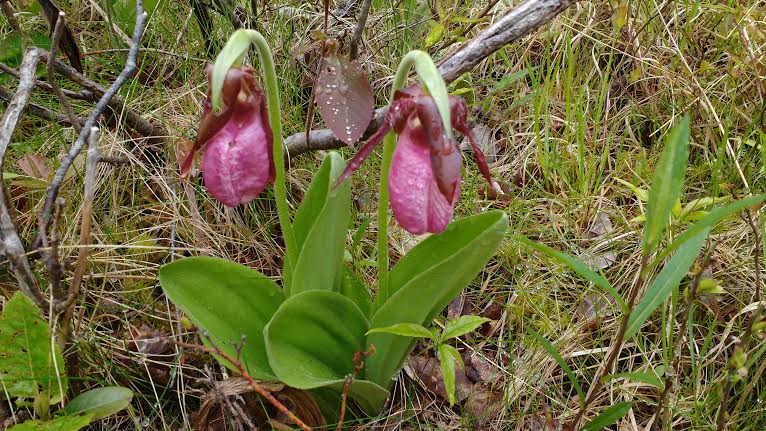En route to the University’s Vivarium parking lot for the 10:00 am start of the field trip this June 18, 2016, my car thermometer read plus three degrees. That prompted one of the seven participants to suggest we should consider the fieldtrip the last of our winter’s offerings!
Most people associate orchids with hot, steamy jungles but the pink lady slipper orchid is a temperate zone one. Given that our spring has been as much Arctic as temperate, it is perhaps no surprise that the orchids are two or three weeks late blooming. It took diligent searching to find perhaps seventy blooms and a number of buds. The plants were much shorter than usual—generally only about 10-15 cm tall– and many of the flowers were remarkably pale, some only off-white, and/or unsymmetrical as though shrivelled. When I checked the area for flowering orchids five days earlier, I found about one-tenth the number, six or seven, most of them only partially open. A few warm sunny days, if we are lucky enough to have some, may encourage the orchids to display their expected beauty. One can only hope!

Just in case, I brought along one of NatureNL’s lovely information/post cards, the one with a lovely photograph of a lady slipper orchid. Fortunately it was unnecessary to hold it up and say, “This is what we came to see.” Regardless of the possible improvement with a few degree days, it is unlikely there will again be 500 and more orchids spotted on the half-hour stroll as was still the case a decade or so ago.
This year, there was a dearth of other blooming plants too. Usually on the orchid walk we see beds of clintonia (corn lily, blue bead), lily of the valley, star flower, bunch berry and trees and shrubs (blueberries, pin cherry, mountain holly…) in full bloom. They too are late this year; very few were in bloom on the slopes of Mount Scio.
Allan Stein


